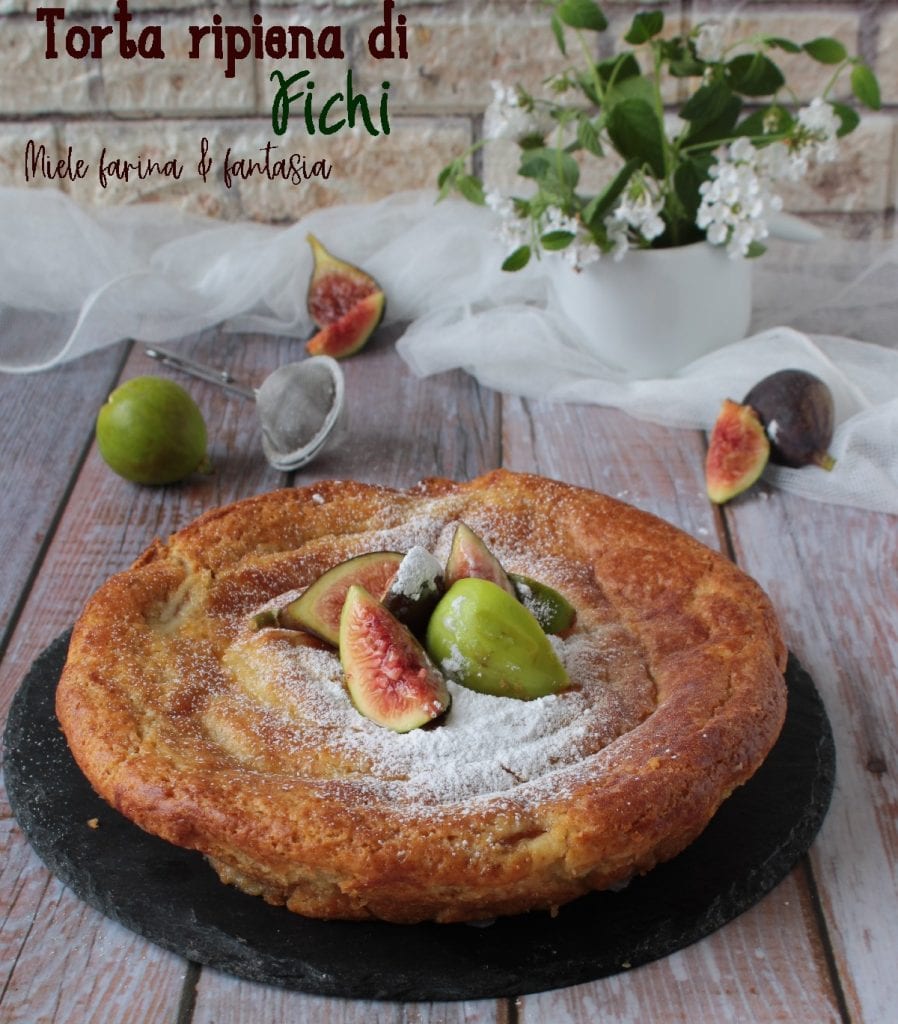The cake I would like to propose today is a delightful treasure filled with fresh figs and a hint of lemon. It is a dessert that can be offered on Sunday lunch, after a meal, or on a special occasion. It is easy to make, not overly sweet, and has an outer texture reminiscent of shortcrust pastry (although it is not the classic and traditional shortcrust pastry), while the inside is moist and very soft. You will fall in love with it at the first bite. Happy reading.

- Difficulty: Very Easy
- Cost: Medium
- Rest time: 3 Hours
- Preparation time: 30 Minutes
- Cooking time: 25 Minutes
- Portions: 10
- Cuisine: Italian
- Seasonality: Fall
Ingredients
- 2 1/2 cups all-purpose flour
- 1/3 cup sugar
- to taste vanilla (liquid or paste)
- 4 1/2 tbsp butter
- 1 egg
- 1/4 cup milk (or fresh fruit juice as desired)
- 1 tsp liquor as desired
- 1 tsp baking powder
- 1/8 tsp fine salt
- 1 lemon
- 2.2 lbs fresh figs weighed after cleaning
Steps
Let’s start by washing a lemon very well and grating its peel very, very finely.
Wash and completely peel the figs. Chop them and put them in a bowl, mixing them with a teaspoon of lemon juice, cover and transfer them to the fridge, meanwhile.
We will need half of the egg white from our egg to seal the cake dough and prevent it from becoming soggy when in contact with the fruit filling. To do this, separate the yolk from the white and, using a teaspoon, take half of it and put it in a coffee cup. The yolk and the remaining white will be included in the cake dough.
Prepare the soft cake dough.
In a large bowl, sift the flour and baking powder very well together; then add in sequence: cold butter, sugar, a pinch of salt, yolk, and remaining white, liquor, vanilla, and half of the grated lemon peel.
Start mixing by hand or with a mixer, pouring in the cold milk, little by little (it may not be necessary to add all the milk, as flour does not always absorb the same amount of liquid), until obtaining a consistency very similar to shortcrust pastry, that is, firm and easy to handle. Compact the dough with your hands and transfer it to a floured table. Work it briefly to form a square or rectangle, wrap it in food film and place it in the fridge for 30 minutes.
After 30 minutes, take out the cake dough and divide it into two “disks,” one slightly smaller than the other.
Butter a 9-inch pan (or wet it with water to ensure the parchment paper adheres better to the mold.
Cut a piece of parchment paper large enough to roll out the larger dough disk that will enclose the figs.
Roll it out to about 12 inches in diameter, with a thickness of 1/8 to 1/5 inch, and with the help of parchment paper, place it in the pan and even it out. Do not trim all the excess dough from the edges, as it can be used to close the cake with a cord-like pattern, if desired.
Now brush the inside of the cake well with the egg white set aside and put the pan in the fridge for the time needed to roll out the other dough disk, still on parchment paper, which will serve as the “lid” for our fig-filled cake.
Preheat the oven to 350°F
Take the pan out of the fridge, add the chopped figs, distributing them evenly inside the cake, flavor everything with the remaining lemon zest, and cover with the second dough disk, sealing the cake perfectly. Brush the top of the cake with a bit more egg white, then make a small cut of a couple of inches on the surface of the dough, in the center; this will allow excess moisture released by the figs to escape.
When the oven has reached temperature, bake the cake on the center rack for 25/30 minutes, depending on your oven’s power.
When the cake is uniformly golden, turn off the oven, leave the door slightly ajar, and let it rest inside the oven without touching it for at least 3 hours, as it could break. The fig-filled cake should be cut and consumed only when it is completely cold.
The extra idea. If you have any leftover raw dough, you can use it to make cookies. It keeps in the fridge for up to a day.
The fig-filled cake should be stored in the fridge, well-sealed in a cake container.
Bon appetit

